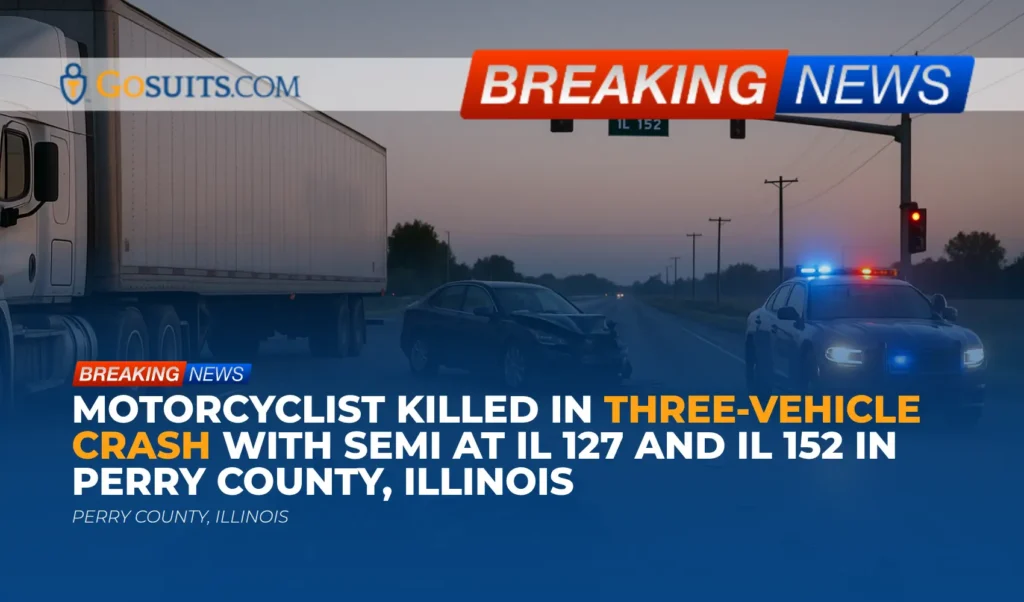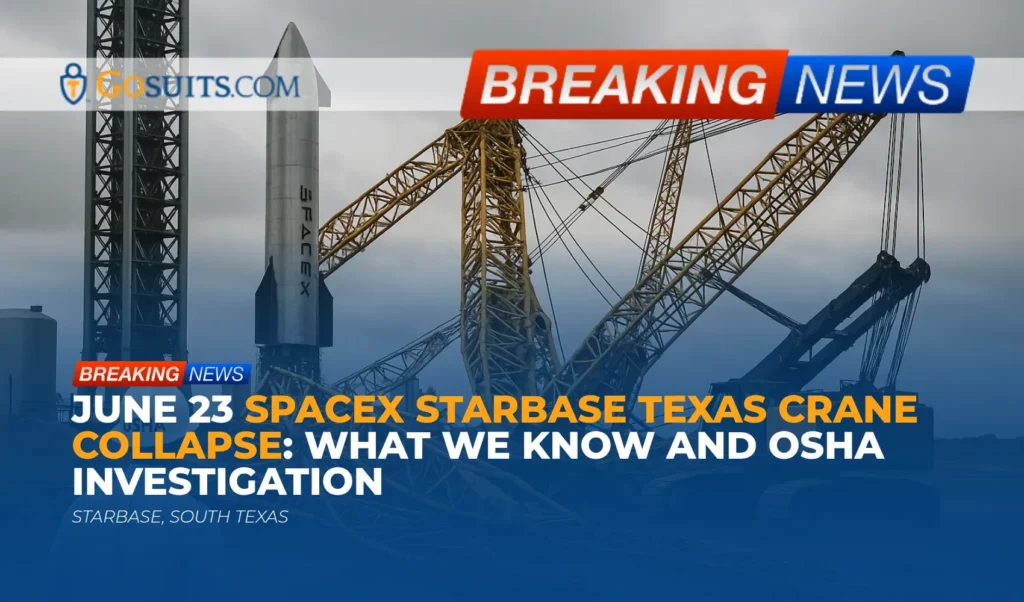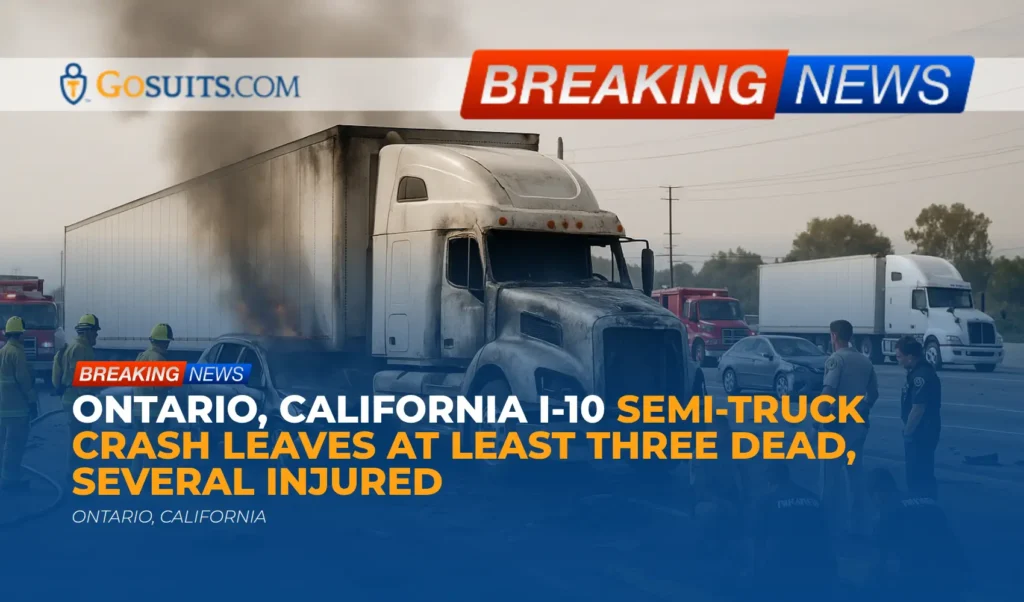- What we know about the South San Jose two-car crash
- Location, timing, and investigation status
- Immediate steps after a serious crash or loss
- How to obtain official records and updates
- Preserving evidence to protect a claim
- Civil liability considerations in two-vehicle collisions
- Insurance and claims issues in California
- Wrongful death considerations in California
- Key legal deadlines and time limits
- Community safety context and intersection risks
- Helpful government resources
- Why taking action now matters
- Commentary from Gosuits San Jose, California Personal Injury Attorney
What we know about the South San Jose two-car crash
According to information released by police on Saturday, October 25, 2025, a two-car collision in south San Jose resulted in one fatality and left the other driver with life-threatening injuries. The collision occurred at approximately 2:35 p.m. near the intersection of Foxworthy Avenue and Jarvis Avenue. Each vehicle reportedly had a single occupant, both drivers, with one pronounced deceased at the scene and the other transported to a nearby hospital. In the aftermath, Foxworthy Avenue was closed in both directions between Meridian Avenue and Jarvis Avenue for investigation and scene processing. As of the information available late Saturday, further details about cause and fault had not been released.
Details such as vehicle make and model, speeds, potential impairment, roadway defects, or right-of-way questions were not available. It is normal in serious crashes for law enforcement to take time to collect measurements, debris fields, and witness statements, and sometimes to request vehicle data and toxicology before making public determinations.
Location, timing, and investigation status
The reported crash area is Foxworthy Avenue at or near Jarvis Avenue in south San Jose. This is a residential corridor with a mix of cross streets and local traffic. When a major injury or fatal collision occurs, police typically:
- Secure the scene to ensure safety and preserve evidence.
- Document the roadway including skid marks, yaw marks, vehicle rest positions, and debris distribution.
- Interview witnesses and canvass for doorbell or dash camera footage.
- Coordinate with the Medical Examiner-Coroner when a death occurs.
- Reconstruct the crash using measurements and, when available, event data recorder downloads.
Because officers had blocked Foxworthy Avenue from Meridian Avenue to Jarvis Avenue, it appears a thorough investigation was underway. Families and the community should expect updates from the investigating agency when they complete preliminary findings. However, comprehensive collision reports and reconstructions can take weeks to finalize, especially when a fatality is involved.
Immediate steps after a serious crash or loss
Serious collisions are disorienting and deeply painful. In the first days, it can help to focus on a few practical safeguards:
- Identify the investigating agency. In city limits, this will often be the San José Police Department. Record the report number if available.
- Preserve documents. Keep copies of discharge papers, transport summaries, and any communications from law enforcement or hospitals.
- Collect photos and videos. Scene images, vehicle damage, and roadway conditions taken soon after a crash may prove important later.
- List potential witnesses. Note names, addresses, phone numbers, and any social media handles of people who saw the collision or arrived immediately afterward.
- Secure the vehicles. If a car has been towed, record the tow yard’s name and location. Avoid authorizing repairs or disposal until a thorough evaluation and documentation are completed.
- Be cautious with insurance calls. Insurance adjusters may reach out quickly. It is wise to consult an attorney before giving any recorded statement to an insurer. What someone says early on can be used against them later.
How to obtain official records and updates
San José Police Department (SJPD) Traffic Collision Report
Families and involved drivers typically request the official collision report from the police Records Unit once it is released. These reports often include diagrams, witness statements, and preliminary findings. For San José, start with the City’s main site and navigate to the Police Department’s records and reporting pages at sanjoseca.gov. When you have a report number, it can speed up requests. Some reports may be available online after processing; more complex reports can take additional time.
Medical Examiner-Coroner records
When a death occurs in Santa Clara County, the Office of the Medical Examiner-Coroner oversees the medicolegal investigation and, when appropriate, autopsies. Next of kin can typically request the final death certificate and, in many cases, the autopsy report once complete. Visit the County’s Medical Examiner-Coroner site at medicalexaminer.sccgov.org for forms, eligibility, and timelines. The coroner’s office can also explain how personal property is handled and when remains may be released.
Hospital and medical records
Hospitals can provide medical records for the injured driver. For a deceased individual, records are generally released to the decedent’s personal representative or executor. Federal guidance on access to health information for deceased individuals is available from the U.S. Department of Health and Human Services at hhs.gov.
California DMV accident reporting
California requires an SR‑1 accident report to the DMV within 10 days when a crash results in injury, death, or property damage exceeding a statutory threshold. The duty to report is separate from insurance reporting. The statutory requirement appears in California Vehicle Code section 16000, available at leginfo.legislature.ca.gov. General DMV information can be found at dmv.ca.gov. Consider discussing this step with an attorney as part of a coordinated plan so the filing is accurate and consistent with the facts.
Public records requests
In some cases, 911 audio, traffic signal timing data, or city-held video may be available through a public records request. California’s open government overview is available at the Attorney General’s site: oag.ca.gov. Local agencies may have their own portals and timelines. Submitting targeted, respectful requests can help expedite responses.

Preserving evidence to protect a claim
Evidence can disappear quickly. Proactive preservation improves clarity and protects the integrity of future claims:
- Vehicles: Arrange secure storage. Do not authorize repairs or disposal before thorough photographs are taken and, if needed, an inspection is conducted. Event data recorders may store pre-crash speed, braking, and throttle inputs.
- Roadway conditions: Document the intersection layout, signage, lane markings, sightlines, and any construction or vegetation that might affect visibility.
- Digital evidence: Doorbell cameras, business surveillance, and dash cams in the area can be invaluable. A prompt, courteous request or preservation letter can make the difference.
- Witness accounts: Memories fade. Write down what witnesses describe, including times, directions of travel, and traffic signal phases.
- Medical documentation: Keep all hospital summaries, imaging reports, discharge instructions, and follow-up referrals.
Attorneys often send formal preservation letters to involved parties, tow yards, and insurers to reduce the risk of spoliation. This step can be particularly important in fatal collisions or when liability is disputed.
Civil liability considerations in two-vehicle collisions
While investigators have not released a cause for this collision, typical fault issues in two-vehicle crashes include:
- Right of way: Whether one driver failed to yield while turning, entering from a stop, or proceeding through a controlled intersection.
- Signal or stop control: Compliance with red lights, stop signs, and flashing turn arrows; timing of yellow intervals.
- Speed: Approaching too quickly for conditions or exceeding posted limits, which increases stopping distance and crash severity.
- Attention: Distraction from devices, infotainment systems, or other activities inside the vehicle.
- Impairment: Alcohol or drug impairment, or other factors like fatigue.
- Roadway and visibility: Signage, vegetation, lighting, or construction that may affect sight distance and decision-making.
In California, multiple parties can share responsibility. If evidence shows a driver violated a duty of care, that driver may be liable for resulting losses. In rare cases, additional entities may be implicated, such as a governmental body responsible for a dangerous condition of public property. Claims against public entities have unique notice requirements and tight timelines, discussed below.
Insurance and claims issues in California
Insurance is often the primary source of recovery after a serious crash. Several coverage types may apply:
- Bodily injury liability: Covers injuries to others when the insured driver is legally responsible, up to policy limits.
- Uninsured/Underinsured Motorist (UM/UIM): May apply if the at-fault driver has no insurance or inadequate limits. UM/UIM can also apply in disputed liability scenarios depending on facts and policy language.
- Medical payments (Med-Pay): No-fault coverage available under some policies for initial medical expenses.
- Property damage: Repair or total loss valuation, towing, and storage fees.
- Wrongful death damages: When a death occurs, the decedent’s heirs may pursue a civil claim for losses recognized by California law.
Important cautions:
- Recorded statements: Insurers for the other driver may request a recorded statement quickly. It is prudent to consult an attorney before speaking; early statements can be used later to challenge fault or damages.
- Medical authorizations: Broad medical releases can open years of unrelated history. Narrow, time-limited requests are safer when medical records are necessary.
- Total loss valuations: Independent valuation research can help address low offers for vehicle loss.
- Policy limits discovery: Knowing available coverage guides strategy. Attorneys can often request policy-limits information and confirm coverage positions.
For general consumer guidance on insurance practices, the California Department of Insurance provides resources at insurance.ca.gov.
Wrongful death considerations in California
When a collision results in a fatality, surviving family members may have a civil claim under California law. Typical wrongful death claims address economic and non-economic harms recognized by statute, such as loss of financial support and companionship. Separately, the decedent’s estate may pursue a survival action for certain damages the decedent suffered before death.
Who can bring a claim and what damages are recoverable depend on specific facts and relationships. Identifying the personal representative of the estate early helps coordinate coroner records, death certificates, and insurance communications. Handling probate and appointment of a representative is often an important early step.
California generally sets a two-year time limit for wrongful death actions under Code of Civil Procedure section 335.1, viewable at leginfo.legislature.ca.gov. Shorter deadlines apply if a public entity may be involved, as discussed below.
Key legal deadlines and time limits
- Personal injury and wrongful death: Generally two years from the date of injury or death under California Code of Civil Procedure section 335.1. See leginfo.legislature.ca.gov.
- Claims against public entities: A written government claim usually must be presented within six months for injury or wrongful death under Government Code section 911.2. See leginfo.legislature.ca.gov.
- DMV accident reporting: SR‑1 filing within 10 days if anyone is injured or if damage meets the statutory threshold. See Vehicle Code section 16000 at leginfo.legislature.ca.gov.
Deadlines can be affected by many factors, including the age of those involved and discovery of facts. Calendaring early and verifying the applicable rules with counsel helps avoid missed windows. Because interacting with insurers can take time, it is wise to begin information gathering promptly.
Community safety context and intersection risks
While the official cause of this crash has not been released, national research shows intersections are complex environments where multiple movements and human decisions converge. Speed and failure to yield are common contributors. NHTSA provides general information on speeding risks at nhtsa.gov, and offers safety resources addressing common intersection hazards at nhtsa.gov.
Local contexts vary. Visibility, signage, and traffic volumes can change across time of day. When serious collisions occur, community members sometimes share video or photos from doorbell cameras that can help illuminate contributing factors. If you live near Foxworthy Avenue and Jarvis Avenue and captured relevant footage, consider preserving it and contacting the investigating agency so it can be reviewed respectfully and properly.
Helpful government resources
- City of San José: Main city portal with links to police services and records: sanjoseca.gov.
- Santa Clara County Medical Examiner-Coroner: Information on death certificates, autopsy reports, and property release: medicalexaminer.sccgov.org.
- California DMV: Accident reporting, driver licensing, and vehicle registration information: dmv.ca.gov. Statutory reporting obligation: Vehicle Code section 16000 at leginfo.legislature.ca.gov.
- California Courts Self-Help: General civil case information, including basics of lawsuits and timelines: courts.ca.gov.
- California Attorney General: Overview of public records access under the California Public Records Act: oag.ca.gov.
- California Department of Insurance: Consumer resources on auto claims and insurer obligations: insurance.ca.gov.
- NHTSA Safety Information: Speeding and intersection safety resources: nhtsa.gov and nhtsa.gov.

Why taking action now matters
Serious collision cases turn on evidence, timing, and careful communication. Delay can make it harder to understand what happened and to protect legal options. Immediate, concrete actions reduce uncertainty and help preserve the truth of the event.
- Secure the record: Request the police report when available, gather medical documentation, and archive photos and videos. Early organization prevents loss of key details.
- Preserve vehicles and data: Vehicles may contain electronic data that can answer questions about speed and braking. Keeping the vehicle intact until all parties have had the chance to inspect can be important.
- Control the narrative with insurers: Statements given before the facts are fully known can affect fault assessments and coverage decisions. Consulting an attorney first helps ensure communications are accurate and well considered.
- Calendar deadlines: Government claim rules and statutes of limitations run quickly. Starting early avoids last‑minute scrambling and missed windows.
- Coordinate family roles: Identifying a point person or, in a fatal case, a personal representative, streamlines interactions with the coroner, hospitals, and insurers.
- Assess coverage landscape: Understanding all available policies, including UM/UIM and Med‑Pay, can influence medical decision-making and financial planning.
Taking these steps promptly creates momentum and reduces the risk that important evidence or rights are lost with time.
Commentary from Gosuits San Jose, California Personal Injury Attorney
Our hearts are with everyone affected by the collision reported near Foxworthy Avenue and Jarvis Avenue. A sudden loss and a life-threatening injury change families in an instant. This article is offered for educational purposes and general information, to help the community understand the process that follows a serious crash and the practical steps that can protect one’s rights.
Based on the limited information publicly shared, investigators are still collecting facts. At this stage, it would be premature to assume fault. In two-vehicle intersection collisions, key issues often include speed, right-of-way, attention, and visibility. Thorough reconstructions take time. Preserving vehicles, locating nearby video, and documenting roadway conditions are essential to arriving at a fair and accurate understanding of what happened.
Insurance companies and large corporations are sophisticated in how they handle serious collisions. Adjusters are trained to contact people early, request broad medical authorizations, and take recorded statements that can later be used to dispute liability or minimize losses. Valuation tools may underestimate total-loss vehicle values or disregard the unique ways a fatality impacts a family. Without guidance, it is easy to agree to steps that seem routine but later complicate a claim.
That is why a free consultation can be so important. Speaking with a seasoned, skilled personal injury attorney before engaging with insurers helps clarify the next steps, identify all available coverage, and avoid avoidable mistakes. It also gives space to ask questions in plain language and to understand timelines, evidence needs, and the roles of police, the coroner, and medical providers. Taking this simple step early brings calm and direction during a difficult time, while decisions still shape the path ahead.






